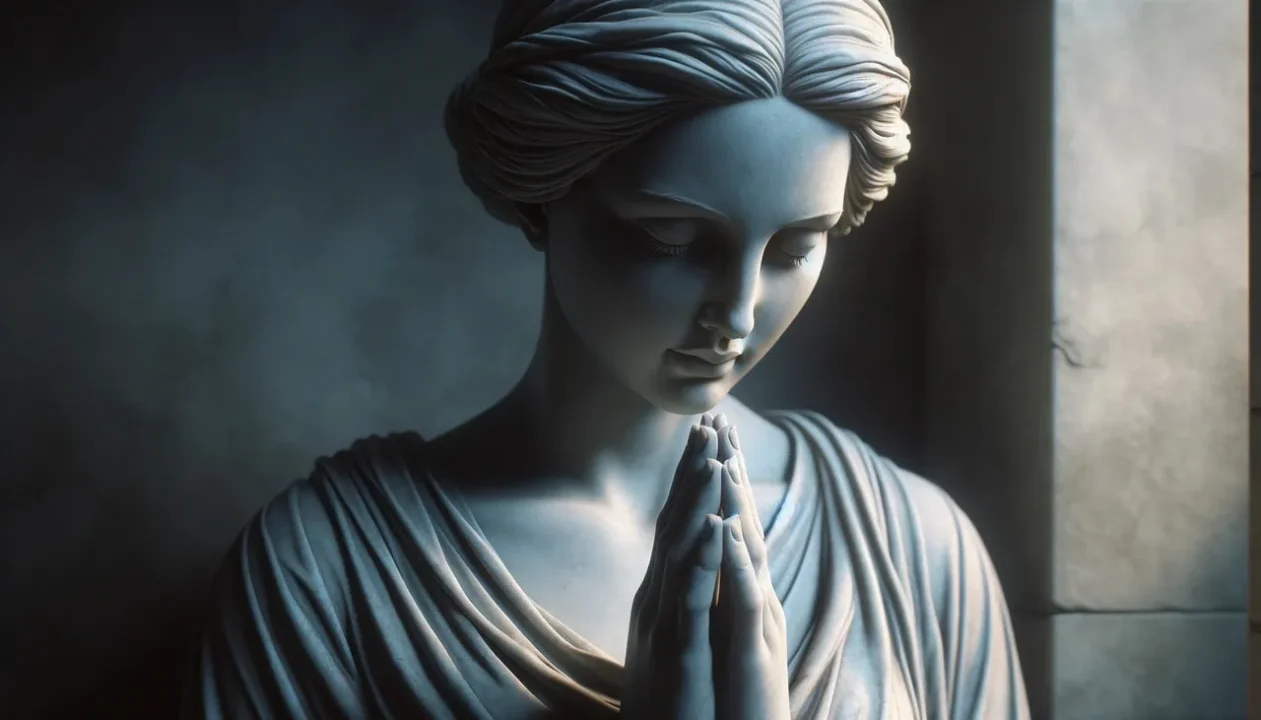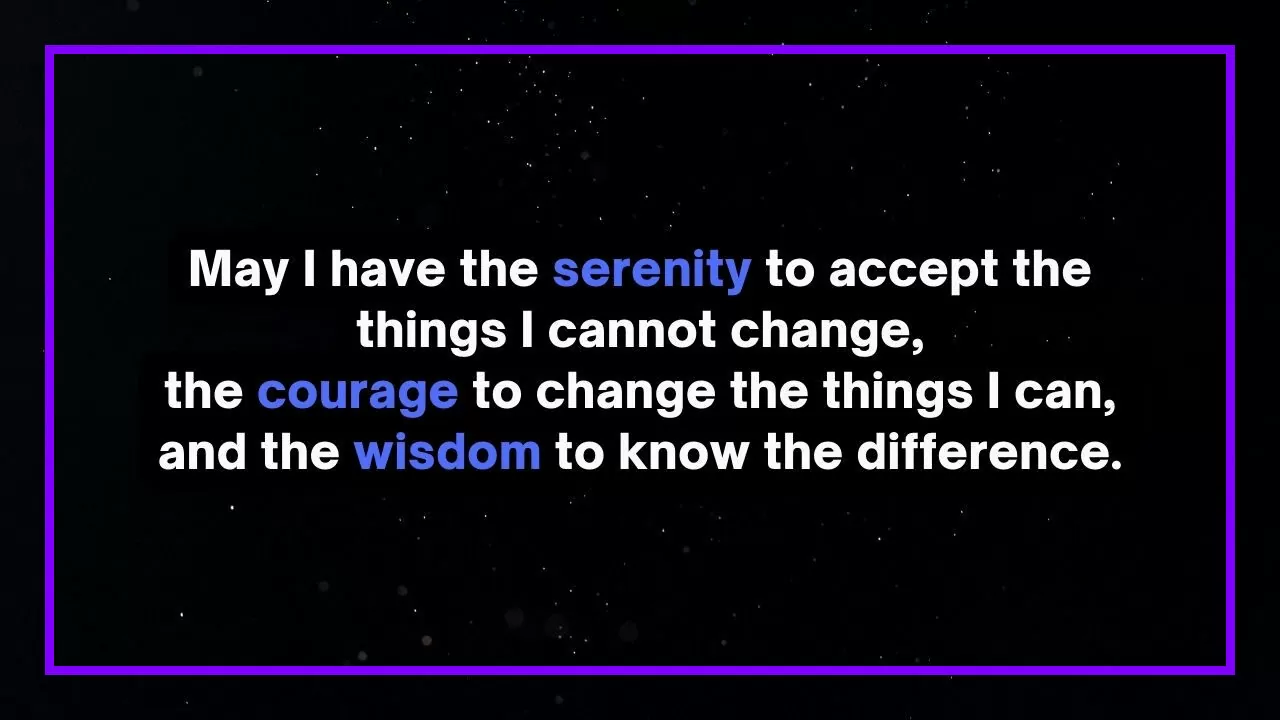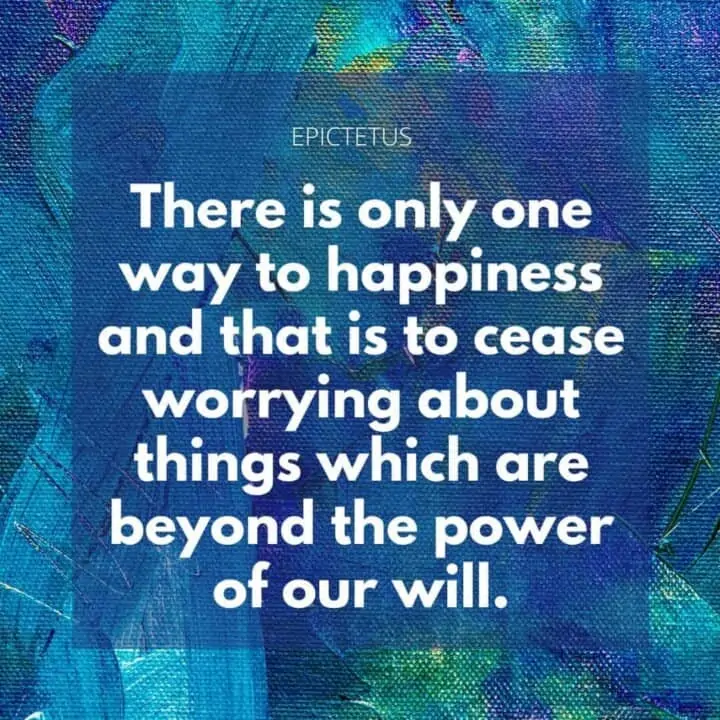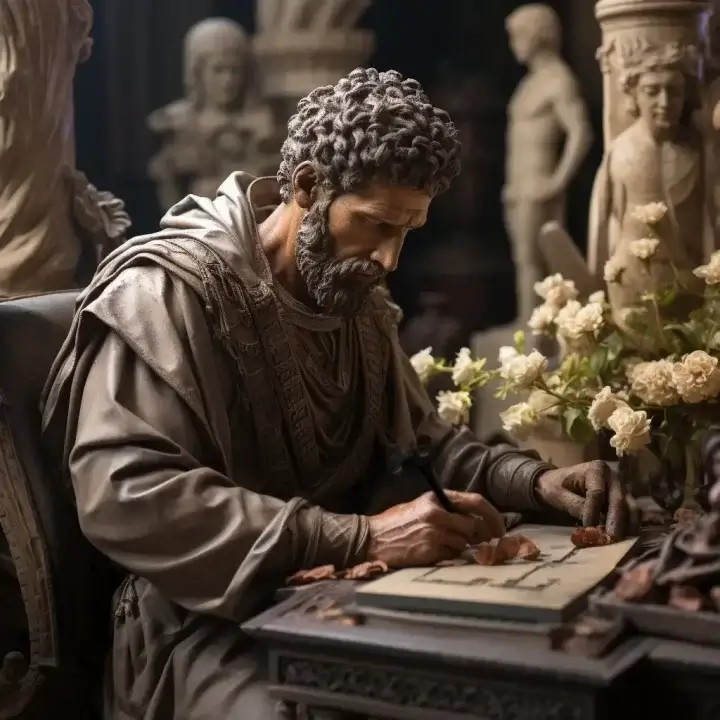Today's Thursday • 5 mins read
— Researched and written by Dr. Sandip Roy.
The Serenity Prayer is a well-known prayer that people say to feel calm and strong during tough times.
Reciting it helps us control our thoughts and focus on what we can do, instead of getting overwhelmed by many directionless thoughts.
Often used in therapy to encourage acceptance and proactive behavior, it has been famously integrated into the 12-step program of Alcoholics Anonymous (AA). They have successfully used it to get their members to quit drinking and win their addiction struggles.
Is there a non-religious, atheist version of the Serenity Prayer that anyone from any faith can practice?
Non-Religious/Atheist Version of The Serenity Prayer
There are several versions of the Serenity Prayer that have been adapted for use by people who do not believe in God or follow a particular religious tradition.
These non-religious versions of the prayer often focus on finding inner peace and strength in difficult circumstances, rather than relying on a higher power (or God) for help and guidance.

In its simplest form, it is:
“May I have the serenity to accept the things I cannot change,
the courage to change the things I can,
and the wisdom to know the difference.”
This version of the Serenity Prayer removes references to God so that it can be used by people of any belief system who do not believe in a higher power.
It can be further shortened to remove the word “May” to appear as an affirmation:
“I have the serenity to accept the things I cannot change,
the courage to change the things I can,
and the wisdom to know the difference.”
It focuses on personal responsibility and inner strength, rather than reliance on a higher power.
Here is another one:
“I am responsible for my own peace,
So, I accept my past.I’ll be brave enough to change my current conditions,
Ignore other people’s opinions of me,
And only compare myself to who I was yesterday.I’ll make the most of every moment
While being kind and true to myself
And find my happiness.”
Here are a few more non-religious versions of The Serenity Prayer:
“Let me have the serenity to accept the things I cannot change,
the courage to change the things I can,
and the wisdom to know the difference.”
“Let me have the strength to face my fears,
the determination to overcome my challenges,
and the resilience to bounce back from setbacks.”
“Let me find peace within myself,
and to live a life that is meaningful and fulfilling.”

Stoicism & Serenity Prayer: How did the Stoics pray?
If you look closely, at the heart of the Serenity Prayer lies Stoicism.
In ancient Greek, “serenity” was “apatheia”, which meant freedom from intense emotional storms.
The Stoics understood when our passions, like anger, grief, or even joy, get out of control, they can ruin us.
The divide between “the things we do not have the power to change” and “the things we do have the power to change” is a basic tenet of Stoicism (dichotomy of control).
The Stoics knew how to avoid “things not up to us” and instead focus on “things up to us.”
Epictetus said, “There is only one way to happiness and that is to cease worrying about things which are beyond the power of our will,”

The Philosopher King Marcus Aurelius wrote,
Either the Gods have power or they have none. If they have no power, why do you pray? If they have power, why do you not pray to them to grant you the ability neither to fear, nor to desire, nor to be distressed by any of these external things, rather than praying that some of them should fall to you and others not? For surely, if the Gods have any power to help human beings, they can help them in this. But perhaps you will object, ‘They have placed this in my own power.’ Well then, would it not be better to make use of what lies within your power as suits a free man rather than to strain for what lies beyond it in a slavish and abject fashion? In any case, who told you that the Gods do not assist us even in things that lie within our power? Begin at least to pray so, and you will see.
— Meditations, 9.40
Rather than pleading for wishes to be granted, Emperor Marcus essentially asks for inner strength to remain unaffected and unbothered by the outside world.
Final Words
There are many other versions of the Serenity Prayer that have been adapted for use by non-religious people.
With a little effort, you can find other versions that resonate more with your beliefs and values.
You may even create your own version.
√ Also Read: Stoicism For Inner Peace: How To Be Calm When Life Is Hard
√ Please spread the word if you found this helpful.
• Our Story!
